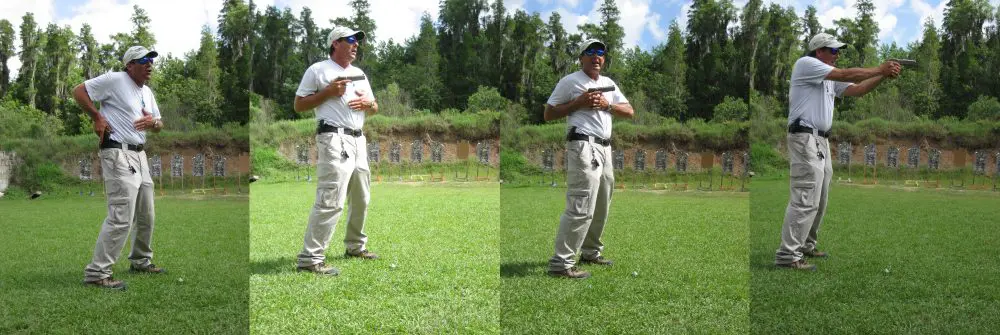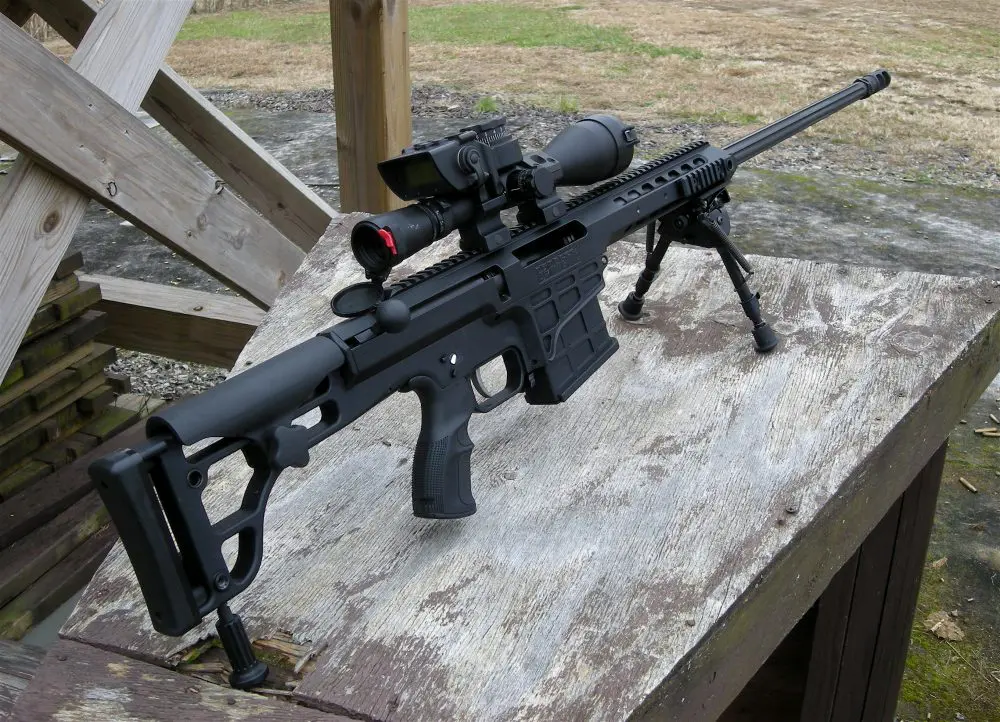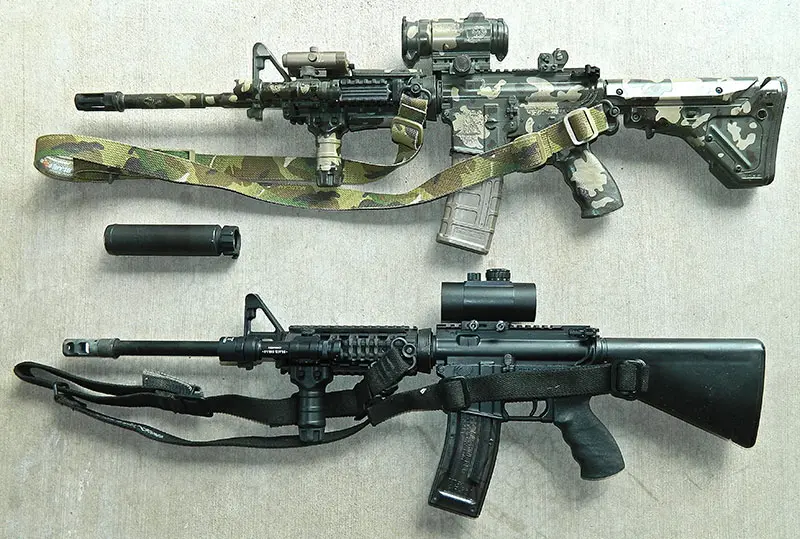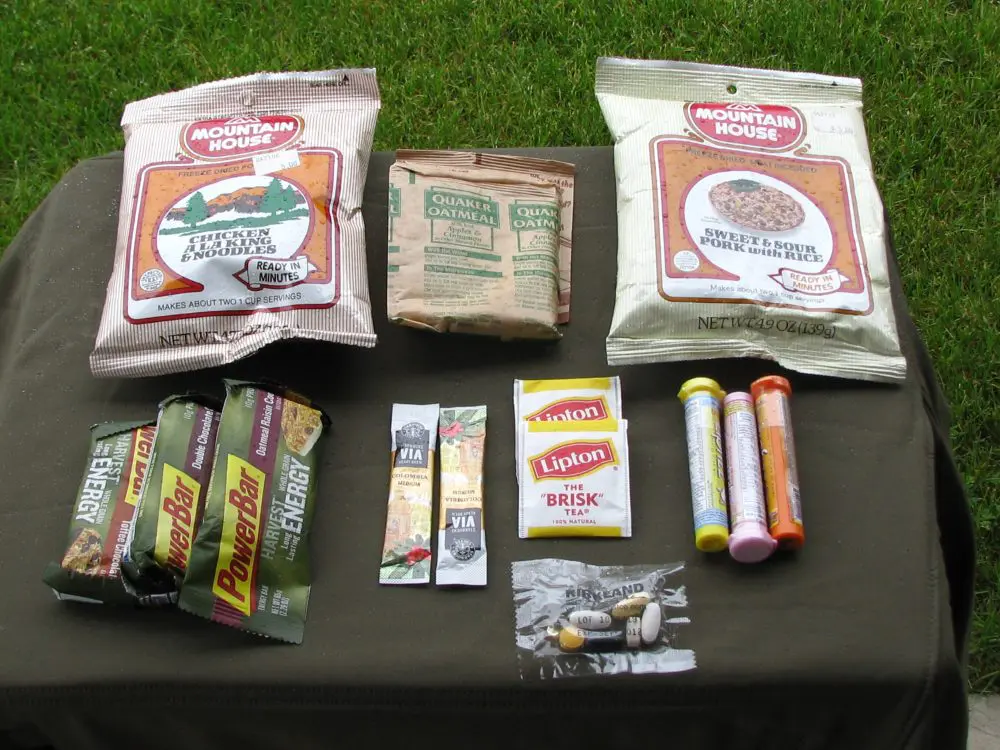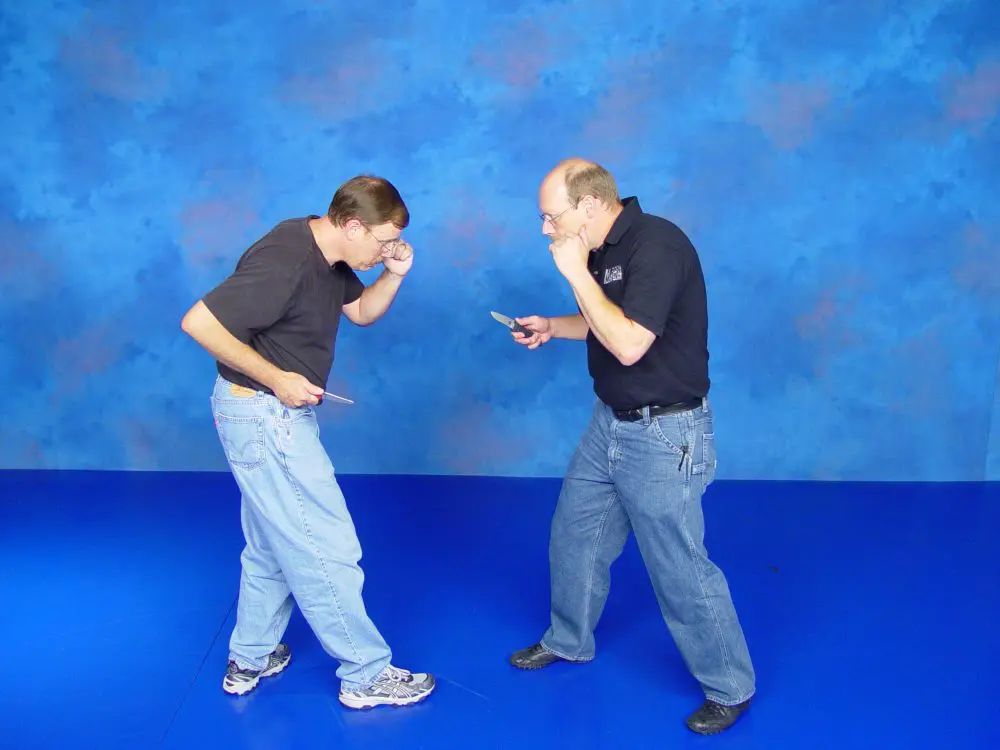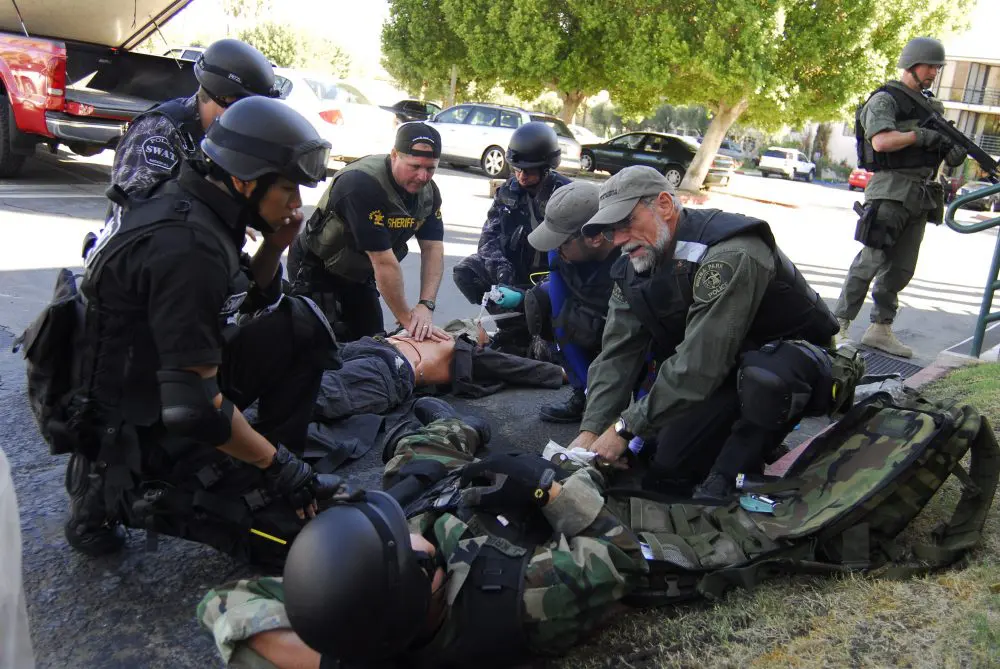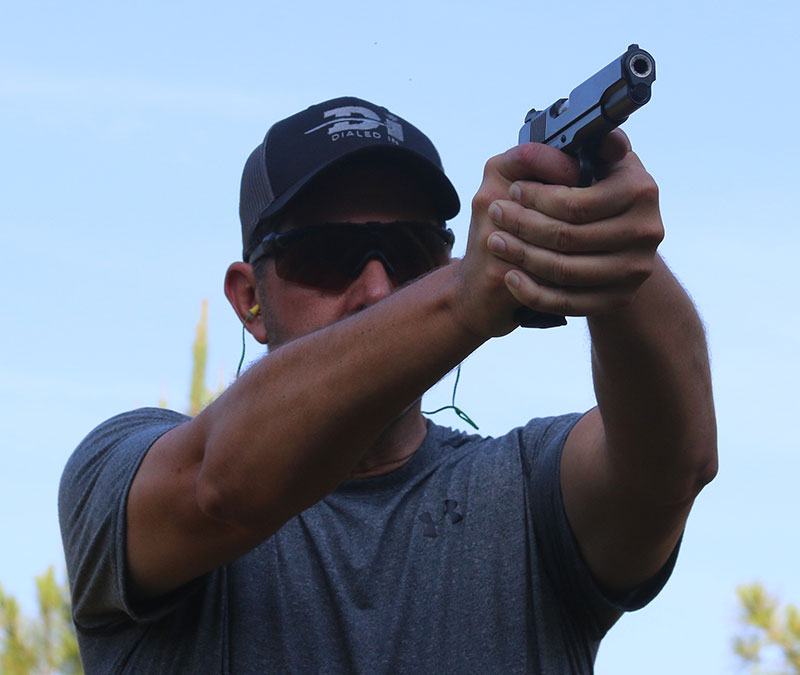
As you look at the news and recent attacks, you can see a clear trend of bad guys clueing in to the effectiveness of long guns. Whether the attack is on a church, a school, an event, or an office, the trendline suggests that the man or woman in a position to stop the next one may find themselves in a standoff fight using their handgun against a killer with a rifle or shotgun.
This radically alters the “good enough” accuracy standards that most accept in training. Barely good enough at five yards translates to “not even close” at standoff. There are drills that can help a shooter gain some yardage with the handgun. Let’s talk about a few.
Table of Contents
SLOW FIRE
Slow fire is where the shooter calmly and deliberately addresses a target, typically at 25 or 50 yards, getting a perfect stance with the natural point of aim set, a hard focus on the front sight perfectly aligned in the rear notch, and puts maximum effort into a clean trigger break. All under no time pressure other than the available muscle energy and oxygen level providing clear vision.
This is the root of standoff skill. A shooter must put in the time both in live and dry fire with a highly disciplined focus on the fundamentals in slow fire to build a level of capability.
How well should a shooter be able to hit from slow fire? With a service-type pistol and bulk ammo, a good rule of thumb is for the shooter to poke groups into an inch for every five yards of distance, e.g., two inches at ten yards and 4.5 inches at 25 yards. That generous ratio allows for some spread inherent in a “combat accurate” pistol and cheap training ammo.
For a serious shooter running a proven pistol and quality ammo that the gun likes, the figure becomes an inch per ten yards.
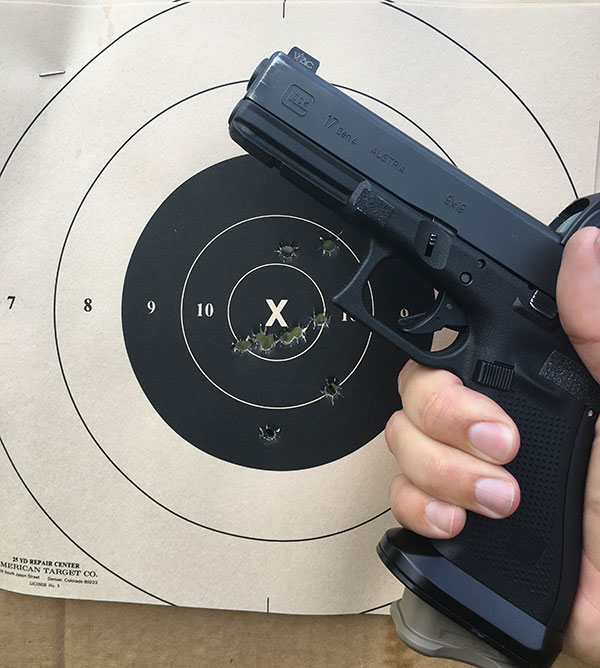
The ideal is grouping about 20% larger than what the handgun is capable of with that particular ammo from a rest, but there is typically a mountain of reps to get there. The short term answer is putting eight or nine of ten possible holes in the 5.5-inch black bull of a B8 from 25 yards.
Ten hits is, of course, better and eminently achievable with discipline. In time, shooters are gunning for a perfect 100 score at 25 yards.
YES, BUT…
However, too often shooters mistake slow fire for training. It really isn’t. Slow fire is a building block, the “training wheels” focus on fundamentals, but it isn’t the objective.
Slow fire exists in a vacuum that disregards time. Employment of the handgun in nearly any scenario, field or defensive, includes time pressure.
In any class, you can query the armed professionals and good-guy citizens for the scenarios that they might reasonably require a high level of accuracy or standoff employment of the handgun. The usual answers include active shooter in various forms, supporting an engaged partner/teammate/loved one, and addressing a threat armed with a long gun (if distinct from an active shooter).
Then have the group estimate the available time for the handgunner to break the shot. The answers tend to predictably bracket a two- to five-second timeframe. Watching the average pistolero practice slow fire, I see shots that tend to break at eight to ten seconds at best, and often full commercial-break-sized spans.
Once a shooter can reliably place the shots from slow fire, they are ready to begin adding time pressure, gradually working down from no time limit to about ten seconds per shot, downward to five seconds, and then two to three seconds per. Once there, the next drills pick up.
PAR 5
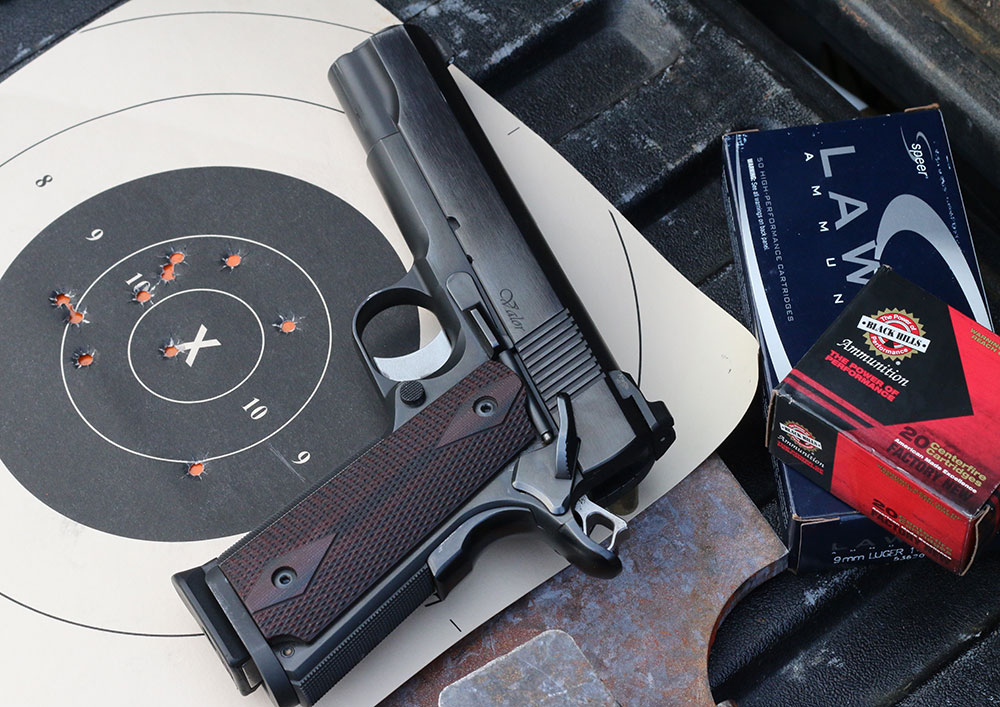
purpose of the Par 5 drill is for the shooter to gain an appreciation of the linkage between sight alignment and trigger break at different tempos. The drill consists of four strings of fire, each shot at 25 yards in a time limit of five seconds on a standard NRA B8 bullseye center from the ready position.
String 1: Fire one shot.
String 2: Fire two shots.
String 3: Fire three shots.
String 4: Fire four shots.
The four strings give a combined ten shots and 100 possible points. Late hits are scored as misses. If you are just getting acquainted with the drill, a starting point may be to simply count the number of hits in the black, e.g., seven of ten.
When you shoot the Par 5, you will immediately notice that each string, and tempo, feels distinctly different. The dwell time that the front sight is relatively still varies from momentary on the one- and two-shot strings to essentially coming into alignment just as the trigger compresses that last “nth” on the three- and four-shot strings.
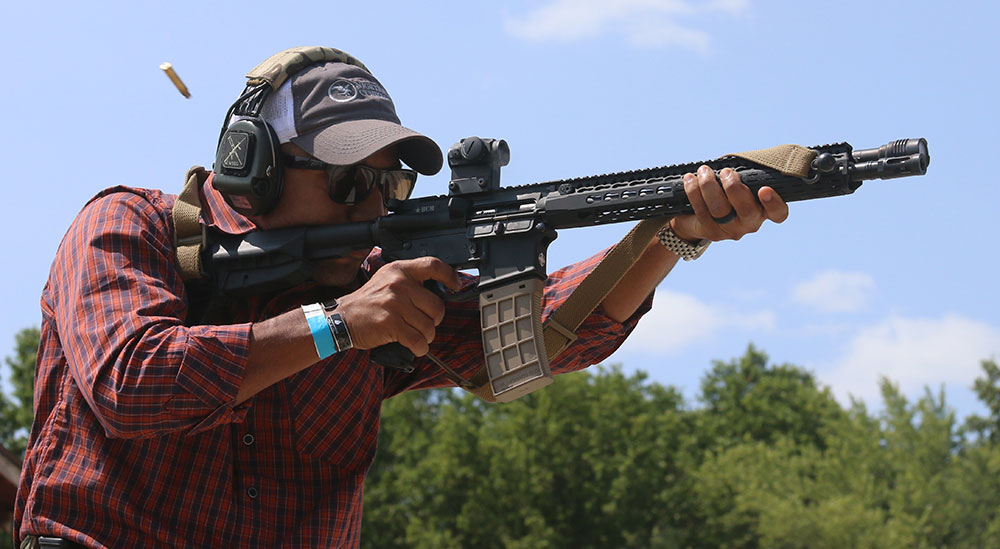
Watching someone else shoot the Par 5, you will see their posture and visage change with each string. The one shot looks like aggressive slow fire, and with each string, the shooter tends to tighten up a little more, lean in another five degrees, and get a little more “war face.”
The drill strongly pushes a shooter to do more in less time while giving one a great sense of what available time translates to in hit quality/certainty. After a few runs, the one- and two-shot strings seem like “gimmes,” although they are breaking in a very realistic timeframe. The ratcheting tempo, with its incremental adjustments in shot-to-shot speed gives the shooter a great sense of where the wheels are falling off and the framework to improve.
For example, if you are nailing the black on strings one and two but the last shot on string three is wide and string four is a mess, you have found the tempo that is the failure point. No stress.
Now thoughtfully approach how to gain back time inside of that span. Can you smooth out the extension onto target for the first hit? Can you get to the trigger sooner and compress it partially while the sights are moving into alignment? Can you anchor the support-hand grasp a little better to decrease muzzle rise and gain back the tenth of a second you need to properly break the trigger?
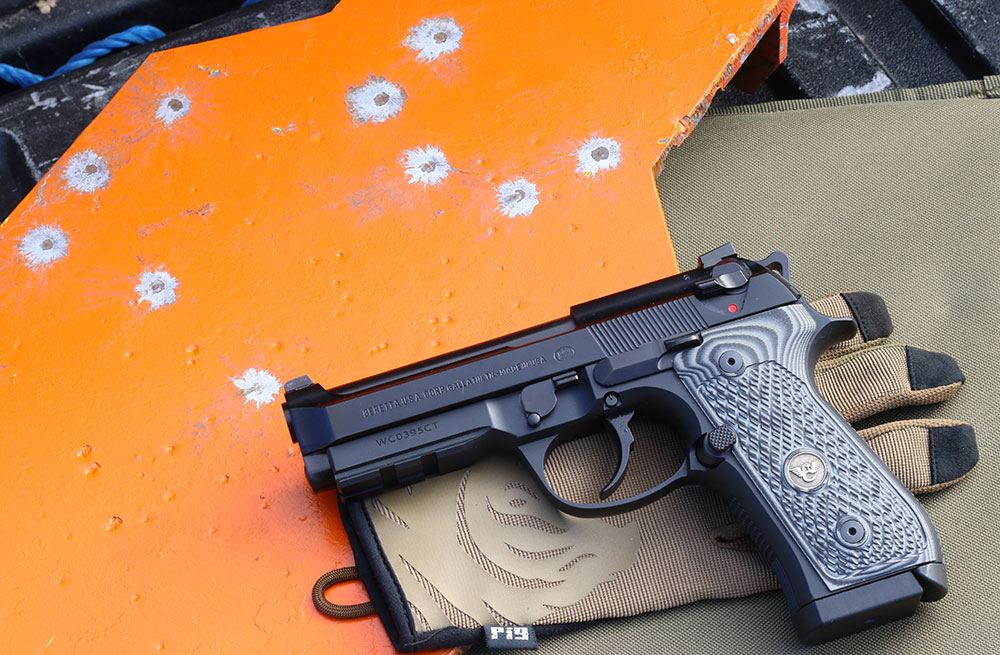
These are three of the common time thieves in standoff shooting, although your malady may be elsewhere, as in a simple lack of discipline to not snatch the trigger.
Many shooters will notice a slight shift in grouping or point of impact from their slow-fire zero. Don’t be alarmed; this is natural. This zero shift is caused when the shooter tightens up the grasp relative to the artificially relaxed hold common in slow fire, causing a slight change in the mount the handgun is recoiling against.
It is also common for the shooter to interact with the trigger a little differently under time pressure and influence point of impact. This is distinct from simply snatching the trigger (bad) and is more indicative of how the shooter will work the trigger on demand. Bottom line: If there is a slight zero shift, it may be your real zero rather than the slow-fire point of aim.
The Par 5 is also a very solid long-gun drill, set up the exact same way, with the only difference being the target is now at 50 yards. Looking at that B8 bullseye through rifle sights or an optic, the drill seems tantalizingly easy until the buzzer goes off, and then every flaw in your mount and trigger press is laid bare for you to see. It is humbling, but in a good way that quickly encourages and guides improvement.
PAR 4
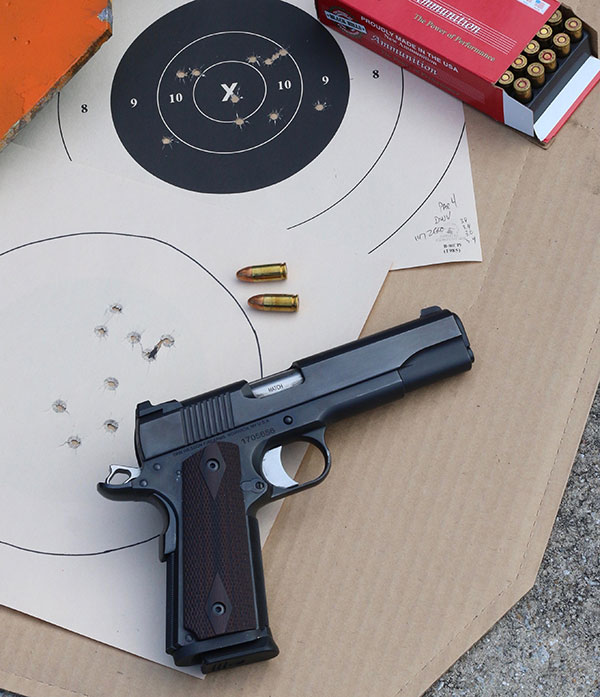
The next drill is a round-up style drill that uses a slightly shorter par time of four seconds in keeping with the situational speed theme. Distance is 20 yards. I typically use an eight-inch circle in classes for the Par 4, which is achievable for most armed pros with effort.
String 1: Draw from the holster and fire two shots.
String 2: Present from the ready and fire three shots.
String 3 (Repeat of 2): Present from the ready and fire three shots.
String 4: Present from the ready using the strong hand only and fire two shots.
Score is a tally of the hits in the eight-inch target. Shooters are looking for seven or more hits, and with some focused effort will often max the drill. More advanced shooters can certainly jump right to the black of a B8 or even score the rings.
The four-second par time gives you just enough time to do everything right with a slight fudge factor to get that tenth of a second confirmation that lets you know as the sight lifts that the hit is good. The more common problem with shooters on Par 4 is they break the shots an interval too soon and are a hand’s width wide of the scoring circle. The object is not speed; the object is control. Speed under control is the hallmark of a master.
VARIATIONS
Steel
I often shoot the Par 4 on steel. It translates easily to a plate rack with eight-inch plates, such as the MGM Plate Rack in a Bucket at the same 20-yard distance. I also shoot the drill on larger steel, such as the Defense Targets Ready Ship out at about 35 yards, which is a similar difficulty level.
Back-Up Guns
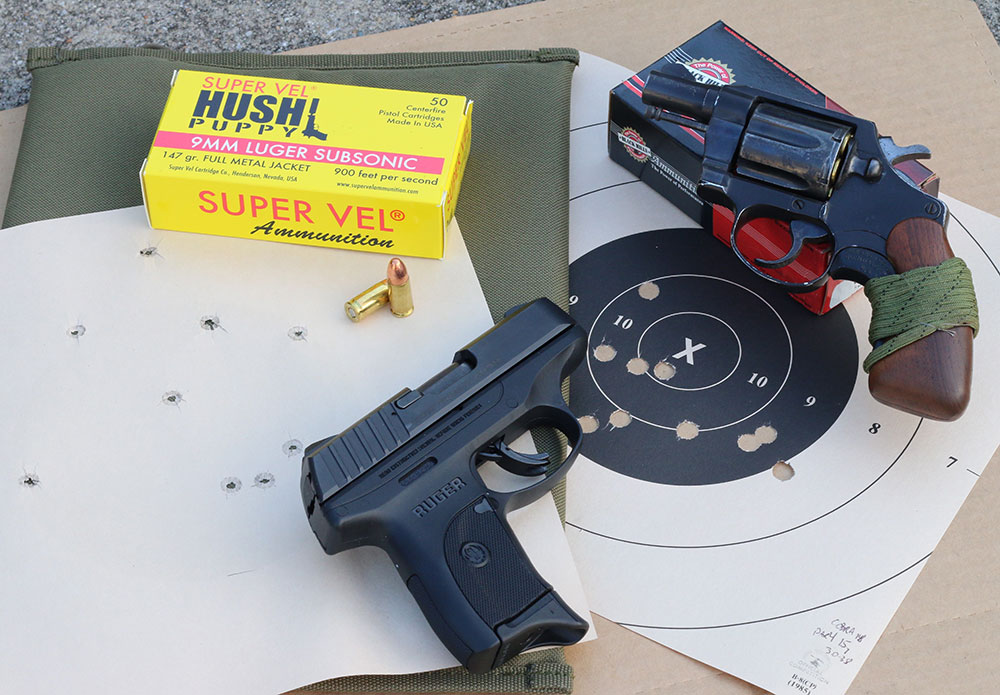
The Par 4 can be a little daunting with that pocket or ankle piece, so I modify it slightly for the BUGs. The shooter can either move up to 15 yards and shoot for the eight-inch or stay at 20 yards and use the entire ten-repair center of the B8 as a scoreable hit.
The tempo and accuracy level of both drills are absolutely achievable with effort for most armed professionals or serious shooters. The biggest obstacles are often not so much technical, or skills based, as they are lack of belief and the mental hurdle that it looks hard. It isn’t hard: It is likely different than the acceptable level of sight alignment and trigger control the shooter is familiar with.
The shooter simply needs to establish the connection between the level of refinement required in sight alignment and the trigger manipulation required to achieve that, and then shoot under control and with a dash of confidence.
I use the Par 4 and Par 5 regularly. One or both are often the drills I run for accuracy work in my own sustainment training as well as in classes. I also use a couple of others, which we may discuss in a future piece, but these two are my current “backbone” drills for standoff skill.
Current training trends rightly emphasize more common close-in fighting distances, but the capability to hit reliably from standoff distance is very much a worthy one. The Par 4 and 5 will help. Check them out.
Justin Dyal retired from the U.S. Marines as a Lt. Colonel with worldwide experience in specialized units. He has taught and been responsible for numerous advanced skills and weapons courses within multiple organizations.

